Jaw asymmetry (Jaw is crooked to the side)
Next is jaw asymmetry. It is generally said that the degree of asymmetry gradually worsens with growth. If left untreated until adulthood, it is more likely to require surgical assistance. If we can respond before the accelerated growth period, we can use growth to our advantage and increase the chances of making positive changes to the skeletal pattern, so we would like to start treatment early.
Please look at the photo below. Before treatment, the lower jaw is significantly crooked to the right. This can be seen even more clearly in the intraoral photo. The right molars are a crossbite with the lower jaw teeth on the outside.
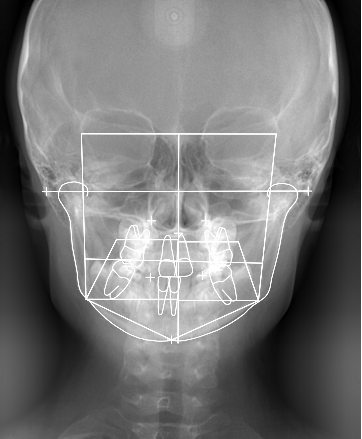
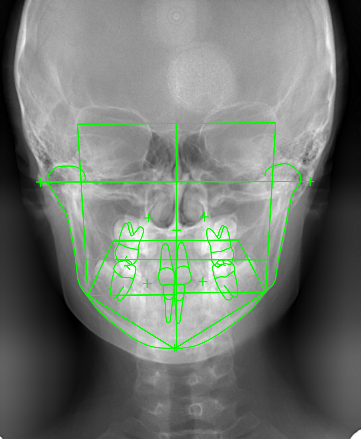
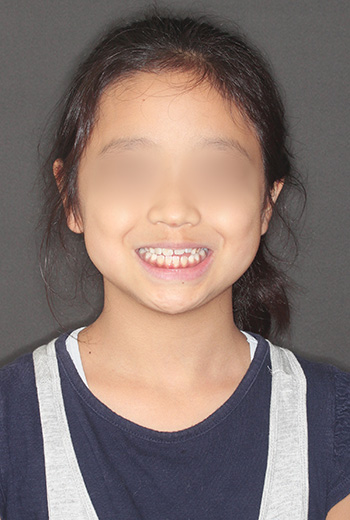
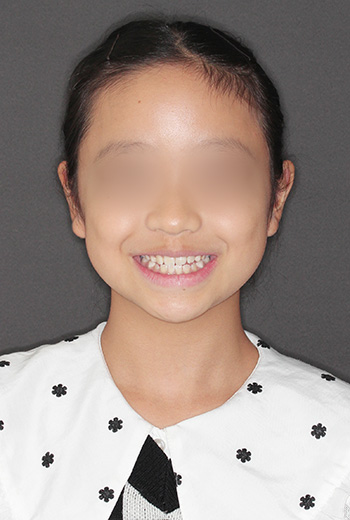
The left is before, right is after the treatment photo of a standard head X-ray and face from the front view.The lower jaw is shifted to the right. It may be difficult to see in the photograph because the face is plump, but it is clear in the X-ray and tracing. After treatment, both the skeletal structure and bite have improved.
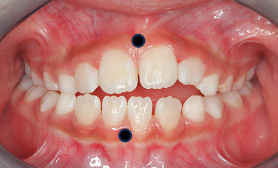
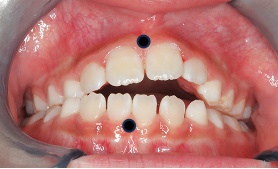
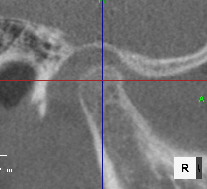

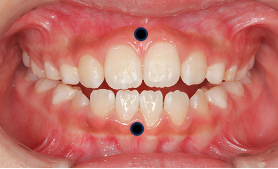
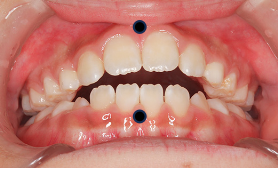

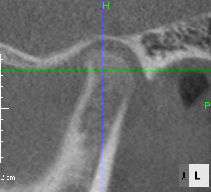
On the left is an intraoral photograph and CBCT image of the TMJ before orthodontic treatment and on the right is after orthodontic treatment. ● indicates the middle of the teeth. Before orthodontic treatment, the ● of the lower jaw is shifted significantly to the right. The right back tooth is a crossbite with the lower jaw teeth on the outside. The CBCT image shows that the mandibular head was displaced from the glenoid fossa before treatment, especially on the right, but after treatment it has settled into the glenoid fossa. Symmetrical growth can now be expected.
The CBCT images show that the mandibular condyles before treatment were displaced from the glenoid fossa on both sides, especially on the right side, and the bite is unstable. First, It is most important to stabilize the bite with splint therapy. After stabilization, the mandibular condyle was placed in the glenoid fossa. Next, since he width of the upper jaw is slightly narrow, a rapid expansion device was placed on the upper jaw to loosen the bony junction of the upper jaw and expand the upper jaw laterally. The splint continues to be attached to the lower jaw to protect the temporomandibular joint from sudden changes in bite.Growth was used to our advantage. The oral midline has gradually become aligned.We will continue to monitor the growth until we proceed to full orthodontic treatment.
As for the device, a splint was attached to the lower jaw to stabilize the bite, and the upper jaw was expanded with a rapid expansion device. The splint on the lower jaw continues to be worn even after treatment.The treatment period was one year and two months, and the treatment cost was 350,000 yen (excluding tax, at that time).
- Common treatment risks at this stage include the development of caries, gingivitis, and TMJ disorder, but none of these occurred in this case.
To summarize this case, the timing of orthodontic treatment varies depending on the case, but if there is a problem with the skeletal pattern, early treatment is essential. It is generally said that jaw asymmetry gradually worsens with growth. If left untreated until adulthood, there is a high possibility that surgical assistance will be required. If we can start treatment before the accelerated growth period, we can use growth to our advantage, bring about positive changes in growth, and control the skeletal pattern, increasing the possibilities for regular simple orthodontic treatment.
